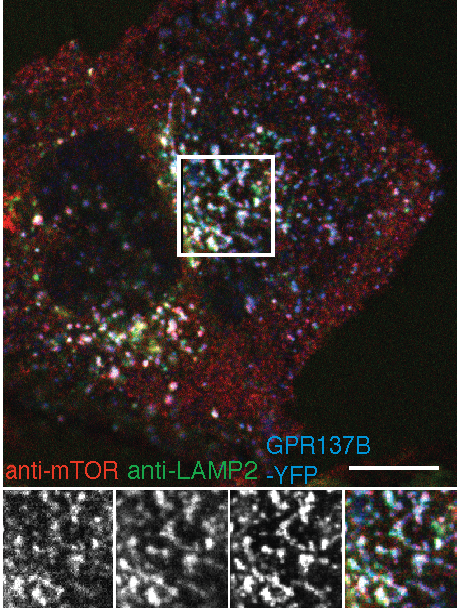Lin’s paper is out in Nature Cell Biology
April 29, 2019

The lysosomal GPCR-like protein GPR137B regulates Rag and mTORC1 localization and activity
Cell growth is controlled by a lysosomal signalling complex containing Rag small GTPases and mammalian target of rapamycin complex 1 (mTORC1) kinase. Here, we carried out a microscopy-based genome-wide human short interfering RNA screen and discovered a lysosome-localized G protein-coupled receptor (GPCR)-like protein, GPR137B, that interacts with Rag GTPases, increases Rag localization and activity, and thereby regulates mTORC1 translocation and activity. High GPR137B expression can recruit and activate mTORC1 in the absence of amino acids. Furthermore, GPR137B also regulates the dissociation of activated Rag from lysosomes, suggesting that GPR137B controls a cycle of Rag activation and dissociation from lysosomes. GPR137B-knockout cells exhibited defective autophagy and an expanded lysosome compartment, similar to Rag-knockout cells. Like zebrafish RagA mutants, GPR137B-mutant zebrafish had upregulated TFEB target gene expression and an expanded lysosome compartment in microglia. Thus, GPR137B is a GPCR-like lysosomal regulatory protein that controls dynamic Rag and mTORC1 localization and activity as well as lysosome morphology.
